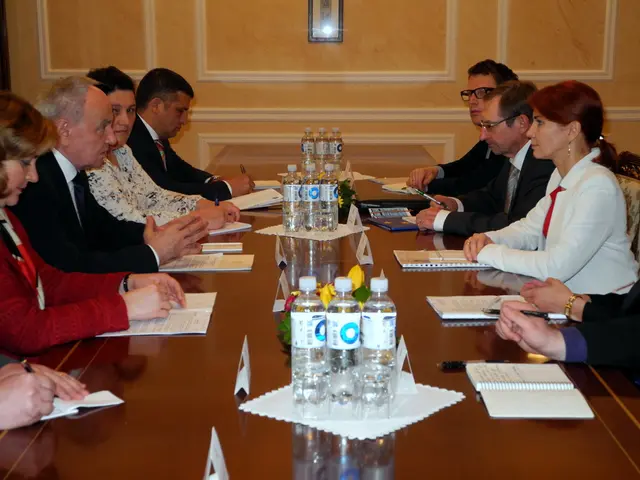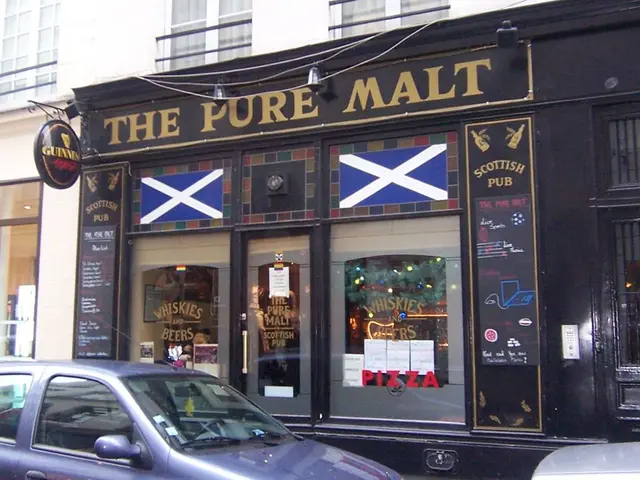Hellfire Tariffs: US Steps Up Steel and Aluminum Import Fees to 50%
Higher U.S. tariffs imposed on imported steel and aluminum goods.
In a surprising move, the US has cranked up the heat on global trade relations, doubling the import tariffs on steel and aluminum from most countries. Steaming ahead with a 25% increase, these new tariffs now stand tall at 50%. President Donald Trump made a splash with this decision, signing an executive order to seal the deal last week [1][2][4].
The German Steel Association has smelled trouble brewing, labeling this move a "new level of escalation in the transatlantic trade war" [1]. Now, the federal government is bracing for the potential fallout, urging stronger support to stay afloat.
Trump's not playing around; this tough-tariff stance is part of his broader strategy to bolster the domestic economy and create jobs in the US. It's been a rollercoaster ride since the start of his second term in January, with global supply chains and stock markets riding the wild waves [1].
The European Commission is trying to keep a cool head, negotiating with the US government to avoid further trade skirmishes. But as the tariffs heat up, the stakes are getting higher [1].
The Fine Print
This steel and aluminum tariff hike falls under Section 232 of the Trade Expansion Act of 1962, giving the President the authority to adjust imports that could jeopardize national security [1][3]. The primary objective is to safeguard the US steel and aluminum industries from unfair trade practices, particularly those perceived to be originating from countries like China [1][3].
For now, the UK is enjoying a 25% tariff rate exemption [1][2]. However, that could change or be subject to quotas starting July 9, 2025, depending on the outcome of the U.S.-UK Economic Prosperity Deal [1][2].
Buckle Up for the Economic Ride
This trade war fire has the potential to cause ripples across industries. Higher input costs for sectors using steel and aluminum may eventually trickle down to consumers, leading to higher prices and possible job losses in affected sectors [1]. But economic experts forecast the overall impact to be limited, with a predicted 0.15% reduction in GDP and a 0.1% increase in consumer prices over the next three years [1].
So, buckle up as we navigate these trade turbulences. Stay tuned as the story unfolds, and remember, it's a jungle out there.
Sources: [ntv.de, AFP], 2022
The community of industries relying on steel and aluminum may need to cooperate more closely in the face of these tariff increases, as higher input costs could lead to increased production costs and potential job losses. The developing countries, particularly those in the steel and aluminum industry, might face challenges in their cooperation with the finance and political sectors, as these tariffs could disrupt their export markets and impact their economies.
As the global trade relations become increasingly complex due to the US's steel and aluminum tariff hike, the general-news media and industry analysts will have crucial roles in keeping the public informed and understanding the broader implications of this trade war.








